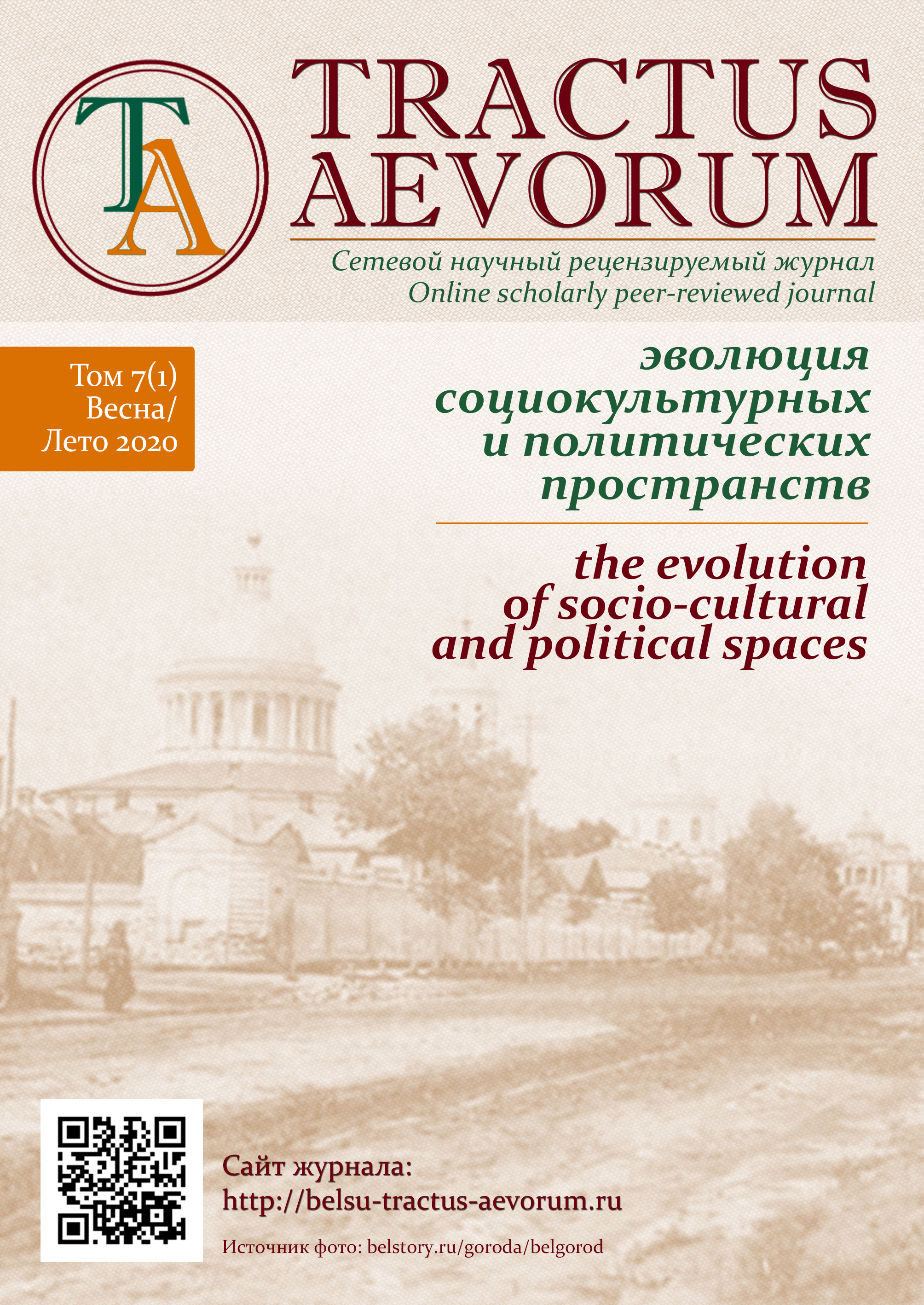
TRACTUS AEVORUM 8 (1). Spring/Summer 2021
|
Contents |
||||||||
|
INTELLECTUAL HISTORY
I. V. Abdulmanova Belgorod Law Institute of the Ministry of Internal Affairs of the Russian Federation named after I. D. Putilin This article is devoted to the analysis of personal and professional realms of life of outstanding Alexandrian Neoplatonists of the fifth century – Hierocles of Alexandria, Hermias, and Aedesia. Interest in them is driven by two main factors: firstly, the lack of knowledge about these personalities in domestic and foreign historical traditions, secondly, their activities represent an example of ‘borderland’ in the intellectual thought that characterized the Alexandrian Neoplatonism in the fifth century. The article states that Hierocles of Alexandria was an example of how Neoplatonists were influenced by Christianity. Hermias left behind him the least in terms of intellectual heritage because he died early. His ideas of soul and of Neoplatonic hypostasis are in the mainstream of traditional Neoplatonic understanding. Not being an independent researcher, Aedesia became a model of intellectual matriarchy in the Neoplatonic family, retaining the position of professor of the Department of Philosophy for her distinguished son Ammonius. This circumstance allowed Ammonius to establish credibility in scientific circles and find a new direction for the relationship between Neoplatonists and Christians in Alexandria through his agreement with Peter III of Alexandria. |
||||||||
|
EMPIRES & PERIPHERIES
S. V. Yartsev, V. G. Zubarev Leo Tolstoy Tula State Pedagogical University This article carefully examines the sources testifying to the events of the domestic and foreign policy of the Empire during the reign of Theodosius I in order to determine the circumstances and causes of the uprising of the Goths-federates in 391–392. After the troops proclaimed Magnus Maximus as the Emperor, the usurper set out to conquer Italy. To this end, he raised a revolt among the Pannonian federates in 387, which was suppressed by Theodosius. In 391, the Goths-federates, who lived on the territory of the Empire under the Treaty of 382, joined the remnants of the rebels. The reasons for this uprising lie, first of all, in the internal crisis of a barbaric society disintegrating without a strong central authority. At the same time, ignoring the problems of the barbarians by the Roman authorities took place against the background of increasing the status of the Pannonian federates, which definitely aggravated the situation with the Goths. The catalyst for the conflict process was the intrigue of the omnipotent magister officiorum Rufinus, who used the difficulties in negotiations with the Huns for personal revenge on magister equitum Promotus. Consequently, it was due to the position of Rufinus that the Goths were not allowed to participate in the campaign of 388 against the usurper Maximus and were accordingly deprived of additional payments. In order to be heard, the Goths were forced to revolt and attack the Theodosius who was returning from Italy. Thus, Rufinus discredited Promotus before the Emperor as unable to control the situation with the allied barbarians. At the same time, he left a wide field of activity for himself as he clearly intended to prove himself worthily in the eyes of Theodosius. |
||||||||
H. Zh. Harutyunyan Yerevan State University Over the course of not only centuries, but millennia, there were multiple different states on the territory of the modern Iranian highlands, the first of which were Elam (at least the fourth though the first millenia BC) and Midia (first half of the first millenium BC), on the ruins of which the Achaemenid state was founded (550-330 BC), and afterwards – the one of the Sassanids (224 / 226-651). “Ashkharatsuyts”`s information about the Achaemenid Iran complements the gaps that occur not only in Movses Khorenats’s “History of Armenia”, but also in Herodot’s “History” and in works by other subsequent historians. Despite the fact that the description of the borders of Iran corresponds to the Sasanian Empire, in the subtext we find the administrative division of the Achaemenid Iran. It is well known that the Achaemenids founded a world power from Egypt to India and Middle Asia, but almost all of the conquered territories are described in the appropriate places (for example, the Eastern Mediterranean – when describing Syria and Judea, India – when describing India, the Asia Minor countries – when describing this peninsula, etc.). Almost all researchers of “Ashkharatsuyts” are unanimous in their opinion that the description of Iran in this primary source by its detail and thoroughness exceeds many other similar works. |
||||||||
|
ROUND TABLE: MILITARY STUDIES IN THE TRANSITIONAL ERA |
||||||||
V. V. Penskoy Belgorod National Research University |
||||||||
O. A. Kurbatov Russian State Archive of Ancient Documents |
||||||||
A. N. Lobin State Complex “The Congress Mansion,” Presidential Property Management Department of the Russian Federation (branch office) |


